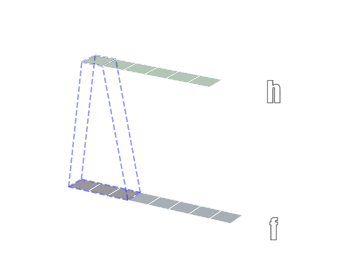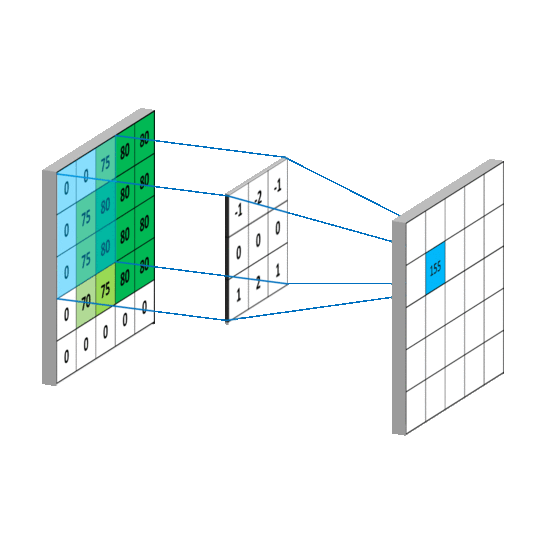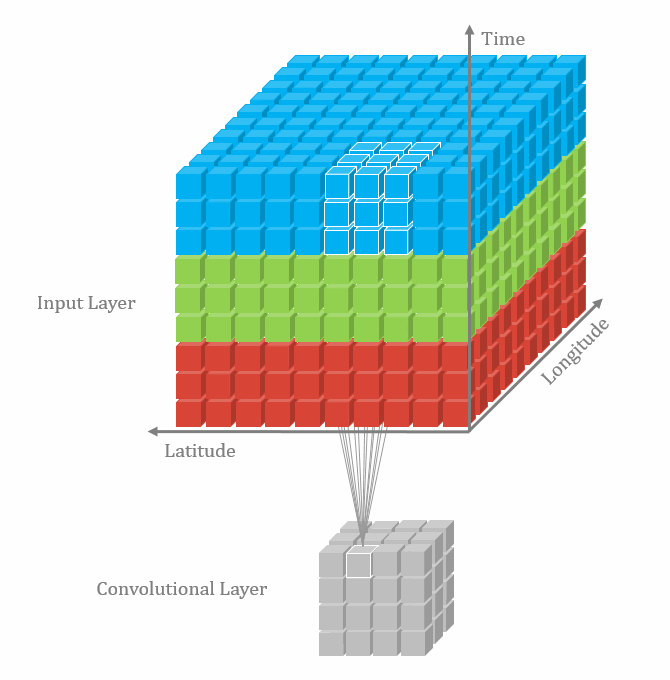深度学习-10-pytorch-3-模型构建
本文最后更新于:2021年8月11日 下午
创作声明:主要内容参考于张贤同学https://zhuanlan.zhihu.com/p/265394674
这篇文章来看下 PyTorch 中网络模型的实现步骤。网络模型的内容如下,包括模型创建和权值初始化,这些内容都在nn.Module中有实现。

模型创建
创建模型有 2 个要素:构建子模块和拼接子模块。如 LeNet 里包含很多卷积层、池化层、全连接层,当我们构建好所有的子模块之后,按照一定的顺序拼接起来。
这里以上一篇文章中 lenet.py的 LeNet 为例,继承nn.Module,必须实现__init__() 方法和forward()方法。其中__init__() 方法里创建子模块,在forward()方法里拼接子模块。
1 | |
当我们调用net = LeNet(classes=2)创建模型时,会调用__init__()方法创建模型的子模块。
当我们在训练时调用outputs = net(inputs)时,会进入module.py的call()函数中:
1 | |
最终会调用result = self.forward(*input, **kwargs)函数,该函数会进入模型的forward()函数中,进行前向传播。
在 torch.nn中包含 4 个模块,如下图所示。
其中所有网络模型都是继承于nn.Module的,下面重点分析nn.Module模块。
nn.Module
nn.Module 有 8 个属性,都是OrderDict(有序字典)。在 LeNet 的__init__()方法中会调用父类nn.Module的__init__()方法,创建这 8 个属性。
1 | |
- _parameters 属性:存储管理 nn.Parameter 类型的参数
- _modules 属性:存储管理 nn.Module 类型的参数
- _buffers 属性:存储管理缓冲属性,如 BN 层中的 running_mean
- 5 个 *_hooks 属性:存储管理钩子函数
其中比较重要的是parameters和modules属性。
在 LeNet 的__init__()中创建了 5 个子模块,nn.Conv2d()和nn.Linear()都是 继承于nn.module,也就是说一个 module 都是包含多个子 module 的。
1 | |
当调用net = LeNet(classes=2)创建模型后,net对象的 modules 属性就包含了这 5 个子网络模块。
下面看下每个子模块是如何添加到 LeNet 的_modules 属性中的。以self.conv1 = nn.Conv2d(3, 6, 5)为例,当我们运行到这一行时,首先 Step Into 进入 Conv2d的构造,然后 Step Out。右键Evaluate Expression查看nn.Conv2d(3, 6, 5)的属性。
上面说了Conv2d也是一个 module,里面的_modules属性为空,_parameters属性里包含了该卷积层的可学习参数,这些参数的类型是 Parameter,继承自 Tensor。
此时只是完成了nn.Conv2d(3, 6, 5) module 的创建。还没有赋值给self.conv1。在nn.Module里有一个机制,会拦截所有的类属性赋值操作(self.conv1是类属性),进入到__setattr__()函数中。我们再次 Step Into 就可以进入__setattr__()。
1 | |
在这里判断 value 的类型是Parameter还是Module,存储到对应的有序字典中。
这里nn.Conv2d(3, 6, 5)的类型是Module,因此会执行modules[name] = value,key 是类属性的名字conv1,value 就是nn.Conv2d(3, 6, 5)。
总结
- 一个 module 里可包含多个子 module。比如 LeNet 是一个 Module,里面包括多个卷积层、池化层、全连接层等子 module
- 一个 module 相当于一个运算,必须实现 forward() 函数
- 每个 module 都有 8 个字典管理自己的属性
模型容器
除了上述的模块之外,还有一个重要的概念是模型容器 (Containers),常用的容器有 3 个,这些容器都是继承自nn.Module。 - nn.Sequetial:按照顺序包装多个网络层
- nn.ModuleList:像 python 的 list 一样包装多个网络层,可以迭代
- nn.ModuleDict:像 python 的 dict一样包装多个网络层,通过 (key, value) 的方式为每个网络层指定名称。
nn.Sequetial
在传统的机器学习中,有一个步骤是特征工程,我们需要从数据中人为地提取特征,然后把特征输入到分类器中预测。在深度学习的时代,特征工程的概念被弱化了,特征提取和分类器这两步被融合到了一个神经网络中。在卷积神经网络中,前面的卷积层以及池化层可以认为是特征提取部分,而后面的全连接层可以认为是分类器部分。比如 LeNet 就可以分为特征提取和分类器两部分,这 2 部分都可以分别使用 nn.Seuqtial 来包装。
代码如下:
1 | |
在初始化时,nn.Sequetial会调用__init__()方法,将每一个子 module 添加到 自身的_modules属性中。这里可以看到,我们传入的参数可以是一个 list,或者一个 OrderDict。如果是一个 OrderDict,那么则使用 OrderDict 里的 key,否则使用数字作为 key (OrderDict 的情况会在下面提及)。
1 | |
网络初始化完成后有两个子 module:features和classifier。
在进行前向传播时,会进入 LeNet 的forward()函数,首先调用第一个Sequetial容器:self.features,由于self.features也是一个 module,因此会调用__call__()函数,里面调用 result = self.forward(*input, **kwargs),进入nn.Seuqetial的forward()函数,在这里依次调用所有的 module。
1 | |
在nn.Sequetial中,里面的每个子网络层 module 是使用序号来索引的,即使用数字来作为 key。一旦网络层增多,难以查找特定的网络层,这种情况可以使用 OrderDict (有序字典)。代码中使用
1 | |
总结
nn.Sequetial是nn.Module的容器,用于按顺序包装一组网络层,有以下两个特性。
- 顺序性:各网络层之间严格按照顺序构建,我们在构建网络时,一定要注意前后网络层之间输入和输出数据之间的形状是否匹配
- 自带forward()函数:在nn.Sequetial的forward()函数里通过 for 循环依次读取每个网络层,执行前向传播运算。这使得我们我们构建的模型更加简洁
nn.ModuleList
nn.ModuleList是nn.Module的容器,用于包装一组网络层,以迭代的方式调用网络层,主要有以下 3 个方法: - append():在 ModuleList 后面添加网络层
- extend():拼接两个 ModuleList
- insert():在 ModuleList 的指定位置中插入网络层
下面的代码通过列表生成式来循环迭代创建 20 个全连接层,非常方便,只是在 forward()函数中需要手动调用每个网络层。
1 | |
nn.ModuleDict
nn.ModuleDict是nn.Module的容器,用于包装一组网络层,以索引的方式调用网络层,主要有以下 5 个方法:
- clear():清空 ModuleDict
- items():返回可迭代的键值对 (key, value)
- keys():返回字典的所有 key
- values():返回字典的所有 value
- pop():返回一对键值,并从字典中删除
下面的模型创建了两个ModuleDict:self.choices和self.activations,在前向传播时通过传入对应的 key 来执行对应的网络层。
1 | |
容器总结
- nn.Sequetial:顺序性,各网络层之间严格按照顺序执行,常用于 block 构建,在前向传播时的代码调用变得简洁
- nn.ModuleList:迭代行,常用于大量重复网络构建,通过 for 循环实现重复构建
- nn.ModuleDict:索引性,常用于可选择的网络层
卷积层
1D/2D/3D 卷积
卷积有一维卷积、二维卷积、三维卷积。一般情况下,卷积核在几个维度上滑动,就是几维卷积。比如在图片上的卷积就是二维卷积。一维卷积

二维卷积

三维卷积

二维卷积:nn.Conv2d()
这个函数的功能是对多个二维信号进行二维卷积,主要参数如下:1
2
3nn.Conv2d(self, in_channels, out_channels, kernel_size, stride=1,
padding=0, dilation=1, groups=1,
bias=True, padding_mode='zeros') - in_channels:输入通道数
- out_channels:输出通道数,等价于卷积核个数
- kernel_size:卷积核尺寸
- stride:步长
- padding:填充宽度,主要是为了调整输出的特征图大小,一般把 padding 设置合适的值后,保持输入和输出的图像尺寸不变。
- dilation:空洞卷积大小,默认为1,这时是标准卷积,常用于图像分割任务中,主要是为了提升感受野
- groups:分组卷积设置,主要是为了模型的轻量化,如在 ShuffleNet、MobileNet、SqueezeNet中用到
- bias:偏置
卷积尺寸计算
简化版卷积尺寸计算
这里不考虑空洞卷积,假设输入图片大小为 $I \times I$,卷积核大小为 $k \times k$,stride 为 $s$,padding 的像素数为 $p$,图片经过卷积之后的尺寸 $O$ 如下:
$O = \displaystyle\frac{I -k + 2 \times p}{s} +1$
下面例子的输入图片大小为 $5 \times 5$,卷积大小为 $3 \times 3$,stride 为 1,padding 为 0,所以输出图片大小为 $\displaystyle\frac{5 -3 + 2 \times 0}{1} +1 = 3$。完整版卷积尺寸计算
完整版卷积尺寸计算考虑了空洞卷积,假设输入图片大小为 $I \times I$,卷积核大小为 $k \times k$,stride 为 $s$,padding 的像素数为 $p$,dilation 为 $d$,图片经过卷积之后的尺寸 $O$ 如下:。
$O = \displaystyle\frac{I - d \times (k-1) + 2 \times p -1}{s} +1$卷积网络示例(非完整训练)
这里使用 inputchannel 为 3,output_channel 为 1 ,卷积核大小为 $3 \times 3$ 的卷积核nn.Conv2d(3, 1, 3),使用nn.init.xavier_normal()方法初始化网络的权值。代码如下:卷积前后的图片如下 (左边是原图片,右边是卷积后的图片):1
2
3
4
5
6
7
8
9
10
11
12
13
14
15
16
17
18
19
20
21
22
23
24
25
26
27
28
29
30
31
32
33
34
35
36
37
38
39
40
41
42
43
44
45
46
47
48
49
50
51import os
import torch.nn as nn
from PIL import Image
from torchvision import transforms
from matplotlib import pyplot as plt
from common_tools import transform_invert, set_seed
set_seed(3) # 设置随机种子
# ================================= load img ==================================
path_img = os.path.join(os.path.dirname(os.path.abspath(__file__)), "imgs", "lena.png")
print(path_img)
img = Image.open(path_img).convert('RGB') # 0~255
# convert to tensor
img_transform = transforms.Compose([transforms.ToTensor()])
img_tensor = img_transform(img)
# 添加 batch 维度
img_tensor.unsqueeze_(dim=0) # C*H*W to B*C*H*W
# ================================= create convolution layer ==================================
# ================ 2d
flag = 1
# flag = 0
if flag:
conv_layer = nn.Conv2d(3, 1, 3) # input:(i, o, size) weights:(o, i , h, w)
# 初始化卷积层权值
nn.init.xavier_normal_(conv_layer.weight.data)
# nn.init.xavier_uniform_(conv_layer.weight.data)
# calculation
img_conv = conv_layer(img_tensor)
# ================ transposed
# flag = 1
flag = 0
if flag:
conv_layer = nn.ConvTranspose2d(3, 1, 3, stride=2) # input:(input_channel, output_channel, size)
# 初始化网络层的权值
nn.init.xavier_normal_(conv_layer.weight.data)
# calculation
img_conv = conv_layer(img_tensor)
# ================================= visualization ==================================
print("卷积前尺寸:{}\n卷积后尺寸:{}".format(img_tensor.shape, img_conv.shape))
img_conv = transform_invert(img_conv[0, 0:1, ...], img_transform)
img_raw = transform_invert(img_tensor.squeeze(), img_transform)
plt.subplot(122).imshow(img_conv, cmap='gray')
plt.subplot(121).imshow(img_raw)
plt.show()
当改为使用nn.init.xavier_uniform_()方法初始化网络的权值时,卷积前后图片如下:
我们通过conv_layer.weight.shape查看卷积核的 shape 是(1, 3, 3, 3),对应是(output_channel, input_channel, kernel_size, kernel_size)。所以第一个维度对应的是卷积核的个数,每个卷积核都是(3,3,3)。虽然每个卷积核都是 3 维的,执行的却是 2 维卷积。下面这个图展示了这个过程。
也就是每个卷积核在 input_channel 维度再划分,这里 input_channel 为 3,那么这时每个卷积核的 shape 是(3, 3)。3 个卷积核在输入图像的每个 channel 上卷积后得到 3 个数,把这 3 个数相加,再加上 bias,得到最后的一个输出。
转置卷积:nn.ConvTranspose()
转置卷积又称为反卷积 (Deconvolution) 和部分跨越卷积 (Fractionally strided Convolution),用于对图像进行上采样。
正常卷积如下:
原始的图片尺寸为 $4 \times 4$,卷积核大小为 $3 \times 3$,$padding =0$,$stride = 1$。由于卷积操作可以通过矩阵运算来解决,因此原始图片可以看作 $16 \times 1$ 的矩阵 $I{16 \times 1}$,卷积核可以看作 $4 \times 16$ 的矩阵$K{4 \times 16}$,那么输出是 $K{4 \times 16} \times I{16 \times 1} = O_{4 \times 1}$ 。
转置卷积如下:
原始的图片尺寸为 $2 \times 2$,卷积核大小为 $3 \times 3$,$padding =0$,$stride = 1$。由于卷积操作可以通过矩阵运算来解决,因此原始图片可以看作 $4 \times 1$ 的矩阵 $I{4 \times 1}$,卷积核可以看作 $4 \times 16$ 的矩阵$K{16 \times 4}$,那么输出是 $K{16 \times 4} \times I{4 \times 1} = O_{16 \times 1}$ 。
正常卷积核转置卷积矩阵的形状刚好是转置关系,因此称为转置卷积,但里面的权值不是一样的,卷积操作也是不可逆的。
PyTorch 中的转置卷积函数如下:
1 | |
和普通卷积的参数基本相同,不再赘述。
转置卷积尺寸计算
简化版转置卷积尺寸计算
这里不考虑空洞卷积,假设输入图片大小为 $ I \times I$,卷积核大小为 $k \times k$,stride 为 $s$,padding 的像素数为 $p$,图片经过卷积之后的尺寸 $ O $ 如下,刚好和普通卷积的计算是相反的:
$O = (I-1) \times s + k$
完整版简化版转置卷积尺寸计算
$O = (I-1) \times s - 2 \times p + d \times (k-1) + out_padding + 1$
转置卷积代码示例如下:
1 | |
转置卷积前后图片显示如下,左边原图片的尺寸是 (512, 512),右边转置卷积后的图片尺寸是 (1025, 1025)。
转置卷积后的图片一般都会有棋盘效应,像一格一格的棋盘,这是转置卷积的通病。
池化层、线性层和激活函数层
池化层
池化的作用则体现在降采样:保留显著特征、降低特征维度,增大kernel的感受野。 另外一点值得注意:pooling也可以提供一些旋转不变性。 池化层可对提取到的特征信息进行降维,一方面使特征图变小,简化网络计算复杂度并在一定程度上避免过拟合的出现;一方面进行特征压缩,提取主要特征。
有最大池化和平均池化两张方式。
最大池化:nn.MaxPool2d()
1 | |
这个函数的功能是进行 2 维的最大池化,主要参数如下:
- kernel_size:池化核尺寸
- stride:步长,通常与 kernel_size 一致
- padding:填充宽度,主要是为了调整输出的特征图大小,一般把 padding 设置合适的值后,保持输入和输出的图像尺寸不变。
- dilation:池化间隔大小,默认为1。常用于图像分割任务中,主要是为了提升感受野
- ceil_mode:默认为 False,尺寸向下取整。为 True 时,尺寸向上取整
- return_indices:为 True 时,返回最大池化所使用的像素的索引,这些记录的索引通常在反最大池化时使用,把小的特征图反池化到大的特征图时,每一个像素放在哪个位置。
下图 (a) 表示反池化,(b) 表示上采样,(c) 表示反卷积。
下面是最大池化的代码:
1 | |
结果如下:
1 | |

nn.AvgPool2d()
1 | |
这个函数的功能是进行 2 维的平均池化,主要参数如下:
- kernel_size:池化核尺寸
- stride:步长,通常与 kernel_size 一致
- padding:填充宽度,主要是为了调整输出的特征图大小,一般把 padding 设置合适的值后,保持输入和输出的图像尺寸不变。
- ilation:池化间隔大小,默认为1。常用于图像分割任务中,主要是为了提升感受野
- ceil_mode:默认为 False,尺寸向下取整。为 True 时,尺寸向上取整
- count_include_pad:在计算平均值时,是否把填充值考虑在内计算
- divisor_override:除法因子。在计算平均值时,分子是像素值的总和,分母默认是像素值的个数。如果设置了 divisor_override,把分母改为 divisor_override。输出如下:
1
2
3
4img_tensor = torch.ones((1, 1, 4, 4))
avgpool_layer = nn.AvgPool2d((2, 2), stride=(2, 2))
img_pool = avgpool_layer(img_tensor)
print("raw_img:\n{}\npooling_img:\n{}".format(img_tensor, img_pool))加上divisor_override=3后,输出如下:1
2
3
4
5
6
7
8raw_img:
tensor([[[[1., 1., 1., 1.],
[1., 1., 1., 1.],
[1., 1., 1., 1.],
[1., 1., 1., 1.]]]])
pooling_img:
tensor([[[[1., 1.],
[1., 1.]]]])1
2
3
4
5
6
7
8raw_img:
tensor([[[[1., 1., 1., 1.],
[1., 1., 1., 1.],
[1., 1., 1., 1.],
[1., 1., 1., 1.]]]])
pooling_img:
tensor([[[[1.3333, 1.3333],
[1.3333, 1.3333]]]])nn.MaxUnpool2d()
功能是对二维信号(图像)进行最大值反池化,主要参数如下:1
nn.MaxUnpool2d(kernel_size, stride=None, padding=0) - kernel_size:池化核尺寸
- stride:步长,通常与 kernel_size 一致
- padding:填充宽度
代码如下:
1 | |
输出如下:
1 | |
线性层
线性层又称为全连接层,其每个神经元与上一个层所有神经元相连,实现对前一层的线性组合或线性变换。
代码如下:
1 | |
输出为:
1 | |
激活函数层
假设第一个隐藏层为:$H{1}=X \times W{1}$,第二个隐藏层为:$H{2}=H{1} \times W_{2}$,输出层为:

如果没有非线性变换,由于矩阵乘法的结合性,多个线性层的组合等价于一个线性层。
激活函数对特征进行非线性变换,赋予了多层神经网络具有深度的意义。下面介绍一些激活函数层。
nn.Sigmoid
- 计算公式:$y=\frac{1}{1+e^{-x}}$
- 梯度公式:$y^{\prime}=y *(1-y)$
- 特性:
- 计算公式:$y=\frac{\sin x}{\cos x}=\frac{e^{x}-e^{-x}}{e^{-}+e^{-x}}=\frac{2}{1+e^{-2 x}}+1$
- 梯度公式:$y^{\prime}=1-y^{2}$
- 特性:
- 计算公式:$y=max(0, x)$
- 梯度公式:

- 特性:
- 有一个参数negative_slope:设置负半轴斜率
nn.PReLU
- 有一个参数init:设置初始斜率,这个斜率是可学习的
nn.RReLU
R 是 random 的意思,负半轴每次斜率都是随机取 [lower, upper] 之间的一个数 - lower:均匀分布下限
- upper:均匀分布上限
本博客所有文章除特别声明外,均采用 CC BY-NC-SA 4.0 协议 ,转载请注明出处!



